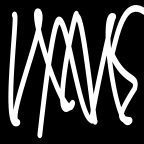IAMAS students come from various regions and have diverse areas of expertise.
- Age: The youngest students are in their twenties; the oldest, their fifties
- Man-to-woman ratio: 7 to 3
- Percent of students with professional experience: 50
- Fields of expertise: Art, design, video, music, photography, engineering, computer networks, architecture, aesthetics, communication
- Where they come from: Gifu, Aichi, Osaka, Tokyo, Saitama, Kagawa, Nigata, Fukushima, Akita, Miyazaki, Hokkaido, Nagano, Okinawa, Korea, China, and more
- Research Student: These students research at IAMAS for a year, as a general rule, under the guidance of a faculty advisor. Upon completing a report, they receive a certificate affirming they have completed their program.
- Credited Auditors: These students can enroll in a desired class and receive course credit.
- Researcher: researchers are been dispatched to research at IAMAS by an organization with which they are affiliated.
Applicants who are determined to have a level of academic ability equal to or greater than those at our school and who have graduated from university can take the entrance exam if they will be at least 22 years old by April 1st of the year in which they wish to enroll. Many kinds of people have taken the IAMAS entrance exam, including some who dropped out of college to start working, and some who studied overseas after high school but did not complete their bachelor's.
No, there are not. There are five class periods from 9 am to 6 pm. However, the 24 hour facilities allow students to research or create any time of day.
Applicants can choose to take the exam in Japanese or English.
We hold an Open House in the summer, but we can also give out information on an individual basis; you can request a tour of the school facilities, a meeting with an instructor whose research you are interested in, and ask questions about enrollment by e-mail. Please contact us directly about this.
Inquiries
In general, our classes take place on the week days from first period (beginning at 9 am) to fifth period (ending at 6 pm) so with a flexible work schedule it is possible to attend IAMAS while working. However, IAMAS has a high workload of research and creating pieces compared with a conventional graduate school, so it may take some ingenuity to accomplish schoolwork and work.
There are no restrictions based on your previous field of study. At IAMAS, you could say that there are as many fields of specialty as there are students. There are students who specialize in art, of course, and others who specialize in philosophy, engineering, design, sociology, environmental studies, social welfare, and more. Students create and research together with classmates and teachers of different fields.
Some of our classes are conducted in English, and we have some exhange with foreign artists and researchers, so prociency in English is beneficial. (There will be interpretation for talks give by non-Japanese lecturers, so those who are not good at English do not have to worry.)
-
Institute of Advanced Media Arts and Sciences Special Award (Prefecture award)
Stipend: 600,000 yen for one year.
Recipients: One first year student and one second year student. -
Ogaki City Award (Municipal award)
Stipend: 600,000 yen for one year.
Recipient: One second year student.
There are also other national scholarships available. For more information, see the "Scholarships" page.
None at all. Students can borrow a notebook computer, ipad, and software for two years without charge.
